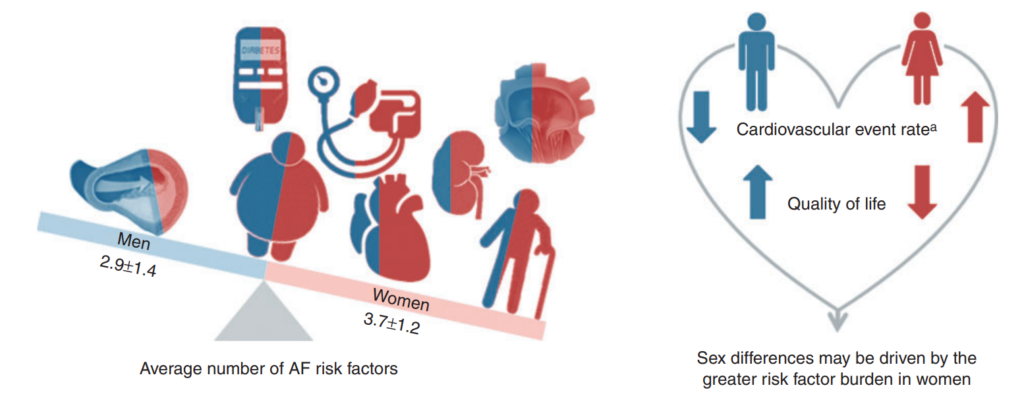
Atrial fibrillation in women
Bias in medicine is a serious issue and while it is not the only factor in determining health outcomes, it can have a massive effect. Historically medicine has studied men’s bodies as a proxy for all. This has led to some women shaped blind spots in medicine. Marielle Kloosterman believes sex differences deserve more attention, not in the least to describe and define their role so that our evaluation and treatment of patients also accounts for sex differences. This requires ensuring adequate representation of women in future clinical trials and sex-specific analyses in the design of impending studies to study the similarities and differences between women and men. Understanding the biological and socio-cultural reasons for sex-specific differences may offer opportunities to help reduce the global burden of AF by allowing better clinical management of the whole patient population, women included.
More insight into the multifaceted aspects of this arrhythmia is needed. Marielle studies patient populations with atrial fibrillation, focusing on underlying risk factors and sex differences. Atrial fibrillation is a chronic, complex, highly prevalent disease with significant morbidity and no cure.

Marielle recently showed that women experience more accumulation of risk factors than men and had a worse quality of life in a sub-analysis of women with permanent atrial fibrillation enrolled in the RACE II study. This lower quality of life in women, especially in the physical domains, was strongly associated with the higher risk factor burden in women. This higher prevalence of multimorbidity in older women is consistently observed in the literature, and worrisome since risk of AF, hospitalization, and death in patients with AF is strongly associated with the level of multimorbidity.
It is known that important sex-specific disparities exist in rate- and rhythm control strategies in women and men. There is a tendency to treat women more conservatively with a rate-control approach, despite their higher symptom burden and lower quality of life. Marielle also demonstrated that women and men experienced uniform benefit in terms of effectiveness in maintaining short-term sinus rhythm, increase in quality of life, and cognitive. The fact that women can achieve similar results as men is an important reason to offer catheter ablation to women.
Marielle is supervised by Isabelle van Gelder and Michiel Rienstra and successfully defended her thesis on Wednesday the 23rd of November, 2020.
This is the first post in a series that highlights our projects related to sex differences in heart disease. A new post is published every two weeks.

